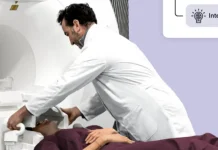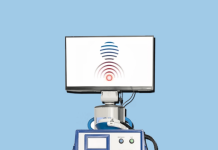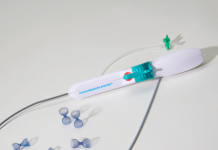On a scale of cardiac density that begins with Blondie’s heart of glass and ends with the Rolling Stones’ heart of stone, Houston-based startup Bivacor’s artificial ticker falls somewhere in the middle. With a titanium shell, the company’s maglev-powered heart device is designed to provide a long-term, life-like alternative to hard-to-get organ transplants.
To make its devices a viable option for the hundreds of thousands of patients with heart failure who either are stuck on a wait list or do not qualify for a transplant at all, Bivacor recently closed a series B funding round for a total of $19 million, which was co-led by Cormorant Asset Management and OneVentures, according to the Houston Business Journal.

Bivacor also received another $3 million from the National Institutes of Health, in the form of a small business grant from the National Heart, Lung and Blood Institute.
The total $22 million haul will be used to continue testing Bivacor’s device and expand the company’s workforce, as it prepares to begin its first human trials.
So far, the device has only been tested in livestock. A study in 2019 showed that, after 90 days, cows implanted with the device were healthy and able to exercise and continued gaining weight at a normal rate.
Although the first artificial heart was implanted in the 1980s, Bivacor’s is among the first to not include a pneumatic, mechanical pump plus a series of chambers for encouraging blood flow.
The company’s device instead relies on a single spinning disk, suspended within a magnetic field, to send blood to the lungs and the rest of the body.
The centrifugal pump is powered by an external battery and controller, which connects to the artificial heart with a wire through the skin. The company describes the fist-sized device as small enough for a child but also powerful enough for a physically active adult.
And according to the Bivacor, with only one moving part and a flow-balancing system that automatically adapts to any changes in a patient’s physiology, the titanium-encased device is a much closer mimic of the heart’s natural function than other total artificial hearts.
Plus, because the rotating disk is levitating without causing any kind of friction or mechanical wear, the device can also last much longer than its competitors, with a lifespan of at least 10 years.
Most other total artificial hearts on the market and in development are intended only as stop-gap solutions until a transplant can be obtained. The most widely used—and the only one currently commercially available in the U.S.—is SynCardia’s replacement device, which has been cleared by the FDA only as a “bridge to transplant,” though the company is currently trialing its use as a more permanent, long-term solution.
In addition, like the majority of total artificial hearts, SynCardia’s plastic device recreates the heart’s anatomy, with two Velcro-connected ventricles and four valves to facilitate blood flow. Not only can that complex construction lead to wear and tear over the years, but it also requires patients to carry around a 13-pound air compressor to power the device.






